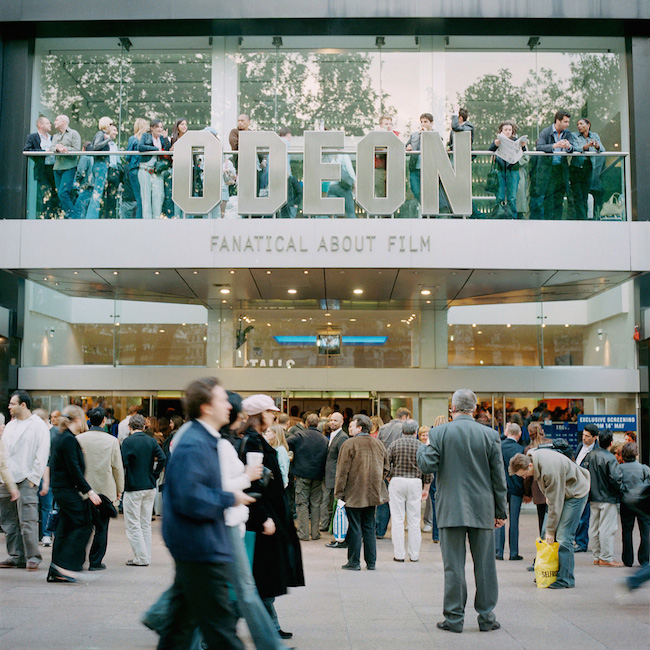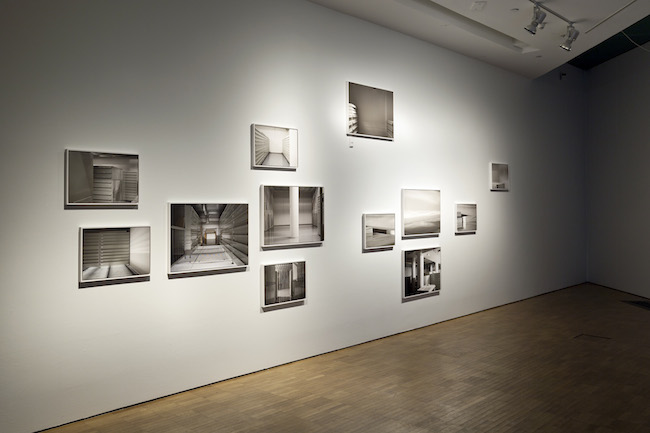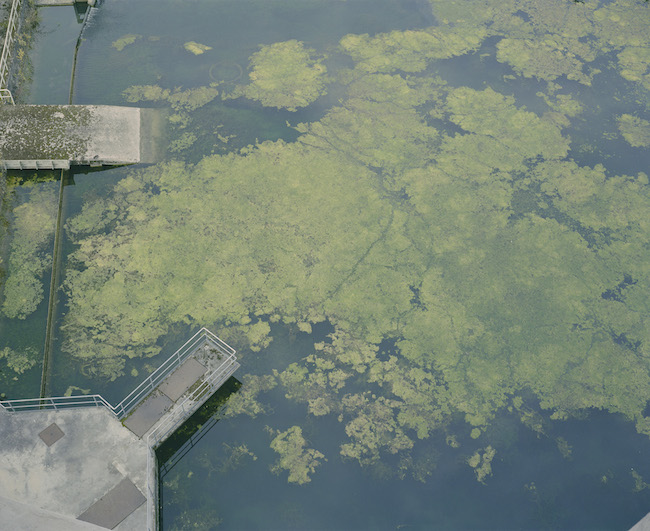
Space inside sentences. Watching a column of light
An interview with Estonian artist Krista Mölder
Laura Brokāne
11/01/2017
Through 19 February, the KUMU museum in Estonia will be showing the exhibition “Between the Archive and Architecture”, which features the work of Estonian artists Neeme Külm, Taavi Talve and Krista Mölder. Although these three artists work in different mediums, they are united in their interest in space and the conditions for perceiving space; in this show they create a multi-layered message on the relationships between time and space in large meaning. “Space is a doubt: I need to keep marking it, defining it; it is never mine, it has never been given to me, I must conquer it.” – a quote by G. Perec, as seen on KUMU’s exhibition's webpage.
Krista Mölder works mostly with the mediums of video and photography, with the goal of revealing the poetic dimension of space. Her works are more fittingly described as having a mood that is meditative, dampened, and unobtrusively searching – and decidedly not that of a scientific drill boring into four walls. That’s why the concept of space here is composed of thoughts about emptiness. About her time spent in Japan, Mölder writes: “It taught me to forget the obvious — which really is the best outcome an artist could have wished for.” It is precisely her attempt to underscore or enlarge the passage of time (e.g., in her photo series “Boredom is Not Far From Ecstasy”) that gives her the ability to establish a new relationship with space. And also, to create that difficult-to-formulate feeling of “being here” – the refreshing and fragile character of involvement.

Krista Mölder. From the series YOU / BLUE, 2016
The exhibition Between the Archive and Architecture focuses on the various ways of experiencing space. Architecture as experience is an important topic in your oeuvre in general. Why are you interested in this theme?
The title of the exhibition you referred to – Between the Archive and Architecture – is a bit of a pun. On the one hand, it outlines two possible field lines, i.e., archives and architecture, but in the context of the exhibition, I find the main semantic emphasis to be on the word “between”. You could say that our exhibition is like a present to the Estonian museum of modern art, KUMU, on its tenth anniversary – it draws attention to its interiors, and thus allows the viewer to contemplate the natures of both the art itself and the gallery that it is being exhibited in. I would say it’s more of a poetic kind of exhibition.
Architecture, as an experience in an exhibition hall, is important because the (interior) space can support the experience of viewing. I’m interested in that because of the dialogue it provides, beginning with the development phase of the idea, and culminating with the actual installation. Architecture as experience fascinates me because of its inherent simultaneous symbiosis of movement with stillness.

Krista Mölder. From the series Boredom Is Not Far from Ecstasy, 2009. Matteo I
In many of your works you’re aiming to create “subjective space”. Can you elaborate on this concept?
I’m not sure I understand the question in the correct sense that it’s being asked, but since the possibility of interpersonal communication – the fact that what is said can be perceived as such – is itself a kind of a miracle, and since I really like some free physical space around me, while also enjoying the freedom of interpretation, and since making art is a way of communicating something, I try to leave some space inside my sentences – my works – that permits the viewer to have access. The meaning of a piece of art should be a little bit more spacious than the surface beneath it.
Your works seem, to me, to be characterized by not so much the deconstruction of space, but by the purging of it – by the creation of emptiness for new experiences.
Yes, I’m not trying to deconstruct as much as I’m aiming to get rid of all things redundant, in the same way that making a space a bit tidier allows for new possibilities to manifest.
Which architectural environments have most powerfully shaped your own experience?
Hmm… At first I wanted to insist that I don’t really have such massively overwhelming architectural experiences, and that I tend to find catharsis in rather more unassertive things – like a big barn wherein I used to lay on my back as a child, watching a column of light beam in through a crack in the roof. But actually, there are many “real buildings”, too, that have gladdened and inspired me by being there. I’m sure traditional Japanese architecture has expanded my sense of space. I must have spent days sliding paper-covered double screen shōji dividers open and closed. Some of the buildings by Seiichi Shirai, in the woods in the Akita region in Japan, left an indelible impression on me, and there have been other similar experiences, too.

Krista Mölder. From the series Boredom Is Not Far from Ecstasy, 2009. Matteo I
Architecture is an impressive archive of both “objective” history as well as individual experience and memory. How does your work reflect the theme of “archival”?
My series Boredom Is Not Far from Ecstasy deals with stored pleasures, layers of sedimentation. Even the form(ality) of the pictures is layered.
The installation Not Leaving a Room (currently exhibited at KUMU) is built upon the idea of lifting the experience of the museum’s own sub-basement archives up into the exhibition gallery – but this time, presented not through facts, but via knowledge stored on the road to wandering.
I have used interpretations of such “experiences layered into stillness” in my other works as well.
Your installation includes new works photographed at KUMU, as well as a remake of a selection of older works. What sparked your interest in this particular museum?
While putting together the exhibition, I was thinking of things that interested me at that time, namely the content as such, and the way I myself wanted to experience the exhibition. The work constitutes the coming together into a single whole of the perspectives of three artists. At one point, we divvied the rooms up between us, and then I started mentally walking through these rooms, trying to project myself into them, conjuring up the feeling of being there – in a place where there should be surprises, where something that looks “real” may turn out to be an illusion.
What is the most important task of a contemporary art museum as a building, in your opinion?
To be a little bit inconspicuous – in order for the art to stand out.

Krista Mölder. Not Leaving a Room, 2016. Photo: Anu Vahtra
Your main genre of artistic expression is photography. What are the most important features and benefits of this medium?
Photography, or drawing with light, must have been one of the very initial impulses, as well as recognition of the fragility of the border surrounding both so-called “reality” and de-familiarized ideation. Currently, I’m motivated by a relationship with time, for example, the possibility of experiencing a number of temporal aspects of a single motif. I even regard my videos as a form of photography that simply manages to capture more time than a still image.
Your photo series Boredom Is Not Far from Ecstasy speaks emotionally and powerfully about this feeling of “being there”, which is almost elusive. How did photography, as a medium, help you solve this mystery?
I’m glad to hear you feel this way. Among other things, photography allows one to watch without watching, to remain disinterested. The greatest challenge to making and compiling the pictures for this exhibition was to allow myself to be a bit boring. Taking pictures onto medium-format film while framing through a waist-level viewfinder is kind of a slow process, and at the same time I’m not hiding behind the camera — which means I can remain a part of the situation while the camera is photographing.

Krista Mölder. From the series Inter-Space, 2016
You are often interested in undetected, everyday things that take peculiar journeys. How do you find inspiration for new works in this expressive style?
A new theme often emerges from previous work. For example, the work I devised in Japan, titled Ma, conveying a spatio-temporal pause, grew seamlessly into Being Present – a work dealing with the potential of space.
I tend to base my works on my own experiences – things that interest me at that time, or that I wish to understand better. For example, the co-operation with Helena Tulve last year, titled YOU/BLUE, originated from an idea that concerned operating on uneven ground in a manner that would allow one’s head to still remain in the clouds, and being concomitantly in touch with both oneself as well as the situation.
The works based on everyday objects and situations you’re referring to are still about either something that I want to create more of, or the mechanics of something which I wish to understand better. Although the clarity of the inspiration for Boredom did emanate from The Pleasure of Text by Roland Barthes, the work itself grew out of a longing for permissibility of promising to expeditiously do nothing – because of the manner in which such moments of idleness can become oh-so-explosively productive.